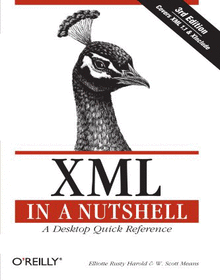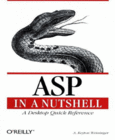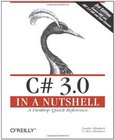XML in a Nutshell
3rd Edition

Book Details:
| Publisher: | O'Reilly Media |
| Series: | OReilly , In A Nutshell |
| Author: | Elliote Harold |
| Edition: | 3 |
| ISBN-10: | 0596007647 |
| ISBN-13: | 9780596007645 |
| Pages: | 600 |
| Published: | Sep 01 2004 |
| Posted: | Nov 19 2014 |
| Language: | English |
| Book format: | CHM |
| Book size: | 3.91 MB |
Book Description:
If you're a developer working with XML, you know there's a lot to know about XML, and the XML space is evolving almost moment by moment. But you don't need to commit every XML syntax, API, or XSLT transformation to memory; you only need to know where to find it. And if it's a detail that has to do with XML or its companion standards, you'll find it--clear, concise, useful, and well-organized--in the updated third edition of XML in a Nutshell.With XML in a Nutshell beside your keyboard, you'll be able to:Quick-reference syntax rules and usage examples for the core XML technologies, including XML, DTDs, Xpath, XSLT, SAX, and DOM Develop an understanding of well-formed XML, DTDs, namespaces, Unicode, and W3C XML Schema Gain a working knowledge of key technologies used for narrative XML documents such as web pages, books, and articles technologies like XSLT, Xpath, Xlink, Xpointer, CSS, and XSL-FO Build data-intensive XML applicationsUnderstand the tools and APIs necessary to build data-intensive XML applications and process XML documents, including the event-based Simple API for XML (SAX2) and the tree-oriented Document Object Model (DOM) This powerful new edition is the comprehensive XML reference. Serious users of XML will find coverage on just about everything they need, from fundamental syntax rules, to details of DTD and XML Schema creation, to XSLT transformations, to APIs used for processing XML documents. XML in a Nutshell also covers XML 1.1, as well as updates to SAX2 and DOM Level 3 coverage. If you need explanation of how a technology works, or just need to quickly find the precise syntax for a particular piece, XML in a Nutshell puts the information at your fingertips.Simply put, XML in a Nutshell is the critical, must-have reference for any XML developer.
Book categories:
Programming , Software , Web Development , Home Computing , Languages & Tools , Programming Languages , Internet , Web Design , XMLDownload Link:
Related Books:
ASP in a Nutshell
A Desktop Quick Reference
Active Server Pages (ASP) has become a standard for developing server-side Web applications. Prior to the development of ASP and other earlier scripting solutions, such as Sun's Java, Netscape's JavaScript, and Microsoft's VBScript, all information served to the client's browser was static -- the Web server did not dynamically generate any part of the site's content. ASP allows Web developers to dynamically generate browser-neutral content.ASP in a Nutshell provides the high-quality documentation that developers really need to create effective ASP applications. It focuses on how features are used in a real application and highlights little-known or undocumented features as well. This book also includes an overview of the interaction of the latest rel...
C# 3.0 in a Nutshell
A Desktop Quick Reference
3rd Edition
This is a concise yet thorough reference to C# 3.0 programming as implemented in Microsoft's Visual Studio 2008. C# 3.0 in a Nutshell gets right to the point, covering the essentials of language syntax and usage as well as the parts of the .NET base class libraries you need to build working applications. But unlike earlier editions, this book is now organized entirely around concepts and use cases, providing greater depth and readability. C# 3.0 introduces the most significant enhancements yet to the programming language, and C# 3.0 in a Nutshell delves deep into the subject while assuming minimal prior knowledge of C#-making it accessible to anyone wi...
Cisco IOS in a Nutshell
A Desktop Quick Reference for IOS on IP Networks
Routers are the glue that holds the Internet together, and Cisco Systems--holding roughly 70% of the market--is the most prominent router manufacturer. Cisco's routers come in all shapes and sizes and almost all of them, from the smallest to the largest, run the IOS operating system. IOS is an extremely powerful and complex operating system, with an equally complex configuration language. There are many commands, with many options, and if one thing is configured incorrectly, the entire company could find itself offline.Cisco IOS in a Nutshell covers IOS configuration for the TCP/IP protocol family. The book is divided into two parts: the first part includes chapters on the user interface, configuring lines and interfaces, access lists, routing protoc...
2007 - 2021 © eBooks-IT.org



